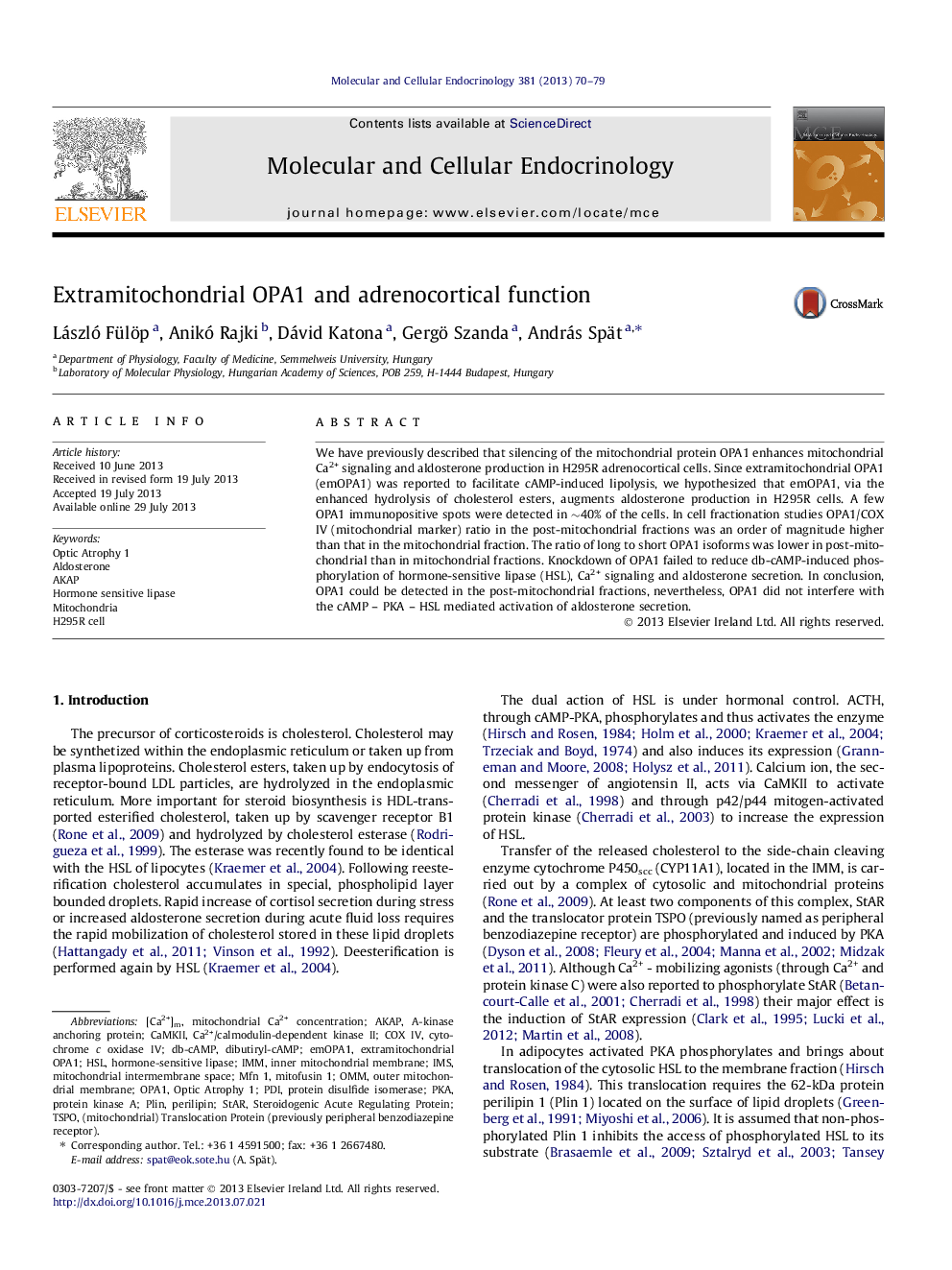| Article ID | Journal | Published Year | Pages | File Type |
|---|---|---|---|---|
| 8477273 | Molecular and Cellular Endocrinology | 2013 | 10 Pages |
Abstract
We have previously described that silencing of the mitochondrial protein OPA1 enhances mitochondrial Ca2+ signaling and aldosterone production in H295R adrenocortical cells. Since extramitochondrial OPA1 (emOPA1) was reported to facilitate cAMP-induced lipolysis, we hypothesized that emOPA1, via the enhanced hydrolysis of cholesterol esters, augments aldosterone production in H295R cells. A few OPA1 immunopositive spots were detected in â¼40% of the cells. In cell fractionation studies OPA1/COX IV (mitochondrial marker) ratio in the post-mitochondrial fractions was an order of magnitude higher than that in the mitochondrial fraction. The ratio of long to short OPA1 isoforms was lower in post-mitochondrial than in mitochondrial fractions. Knockdown of OPA1 failed to reduce db-cAMP-induced phosphorylation of hormone-sensitive lipase (HSL), Ca2+ signaling and aldosterone secretion. In conclusion, OPA1 could be detected in the post-mitochondrial fractions, nevertheless, OPA1 did not interfere with the cAMP - PKA - HSL mediated activation of aldosterone secretion.
Keywords
PDIOMMAKAPcytochrome c oxidase IVMitochondrial Ca2+ concentrationHSLCOX IVTSPOdb-cAMPH295R cellpKaCaMKIIIMSCa2+/Calmodulin-dependent kinase IIopa1[Ca2+]moptic atrophy 1aldosteroneimminner mitochondrial membraneStarouter mitochondrial membraneMitochondrial intermembrane spacehormone sensitive lipasehormone-sensitive lipasemitofusin 1MitochondriaA-kinase anchoring proteinprotein disulfide isomeraseprotein kinase AperilipinPLIN
Related Topics
Life Sciences
Biochemistry, Genetics and Molecular Biology
Cell Biology
Authors
László Fülöp, Anikó Rajki, Dávid Katona, Gergö Szanda, András Spät,
